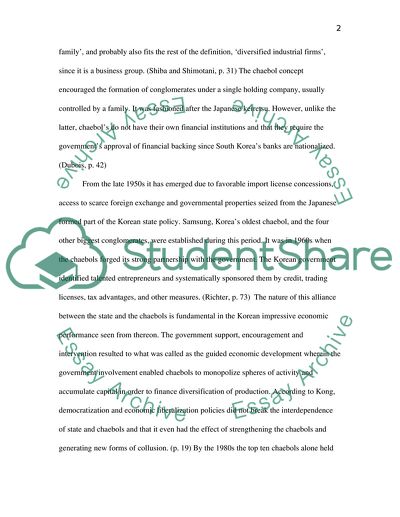Cite this document
(“The South Korean Chaebol System Essay Example | Topics and Well Written Essays - 2000 words”, n.d.)
The South Korean Chaebol System Essay Example | Topics and Well Written Essays - 2000 words. Retrieved from https://studentshare.org/macro-microeconomics/1566607-please-look-below-in-other-instrustions
The South Korean Chaebol System Essay Example | Topics and Well Written Essays - 2000 words. Retrieved from https://studentshare.org/macro-microeconomics/1566607-please-look-below-in-other-instrustions
(The South Korean Chaebol System Essay Example | Topics and Well Written Essays - 2000 Words)
The South Korean Chaebol System Essay Example | Topics and Well Written Essays - 2000 Words. https://studentshare.org/macro-microeconomics/1566607-please-look-below-in-other-instrustions.
The South Korean Chaebol System Essay Example | Topics and Well Written Essays - 2000 Words. https://studentshare.org/macro-microeconomics/1566607-please-look-below-in-other-instrustions.
“The South Korean Chaebol System Essay Example | Topics and Well Written Essays - 2000 Words”, n.d. https://studentshare.org/macro-microeconomics/1566607-please-look-below-in-other-instrustions.


